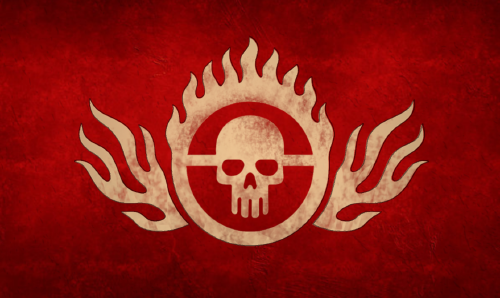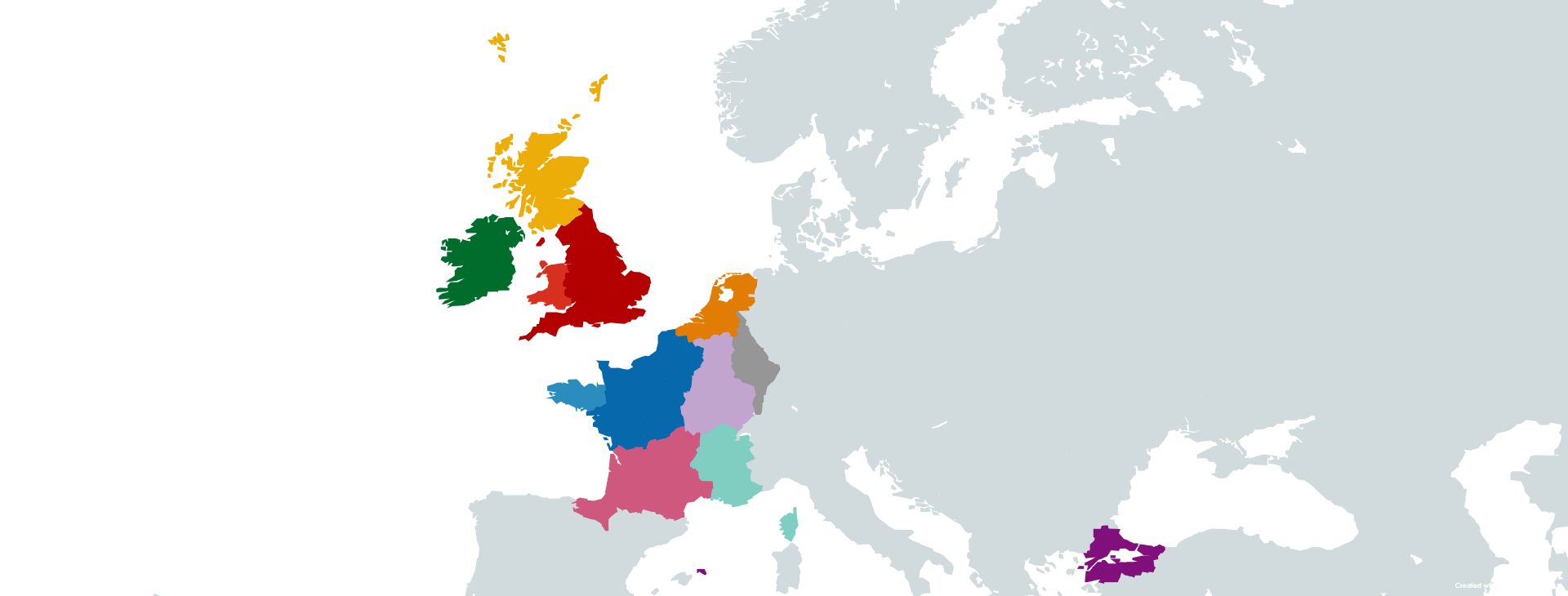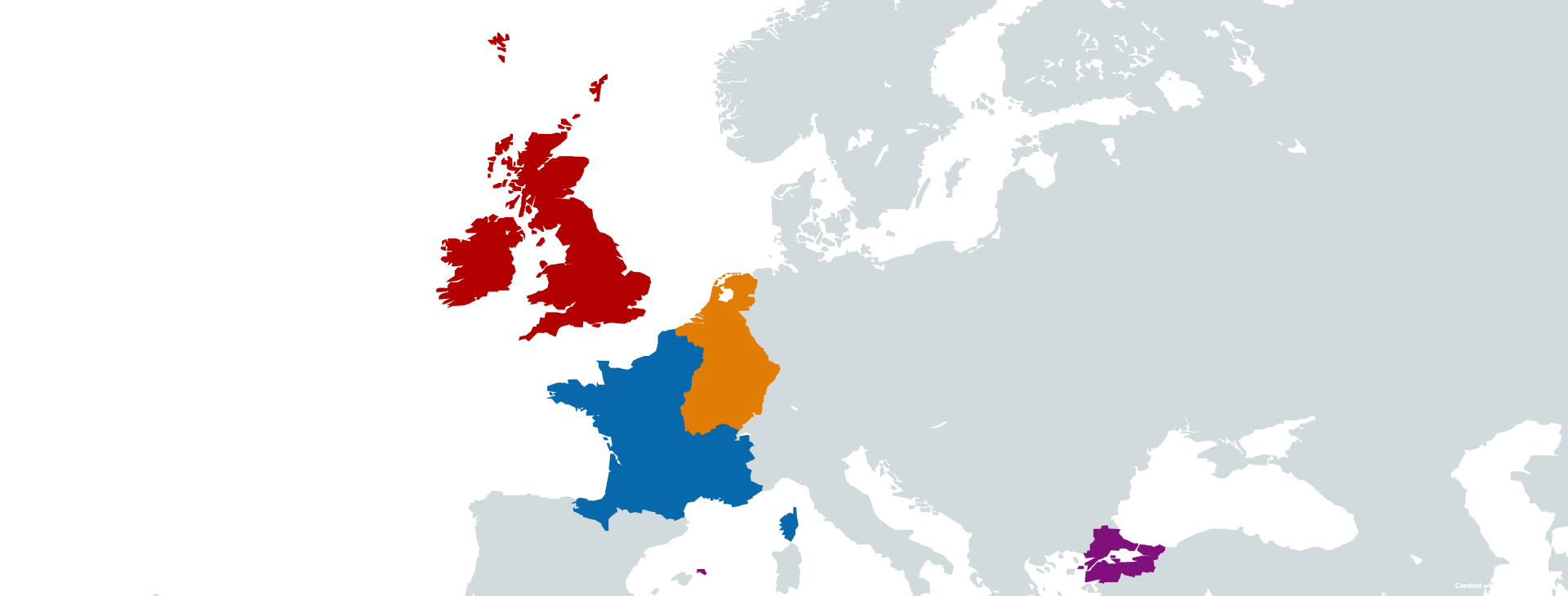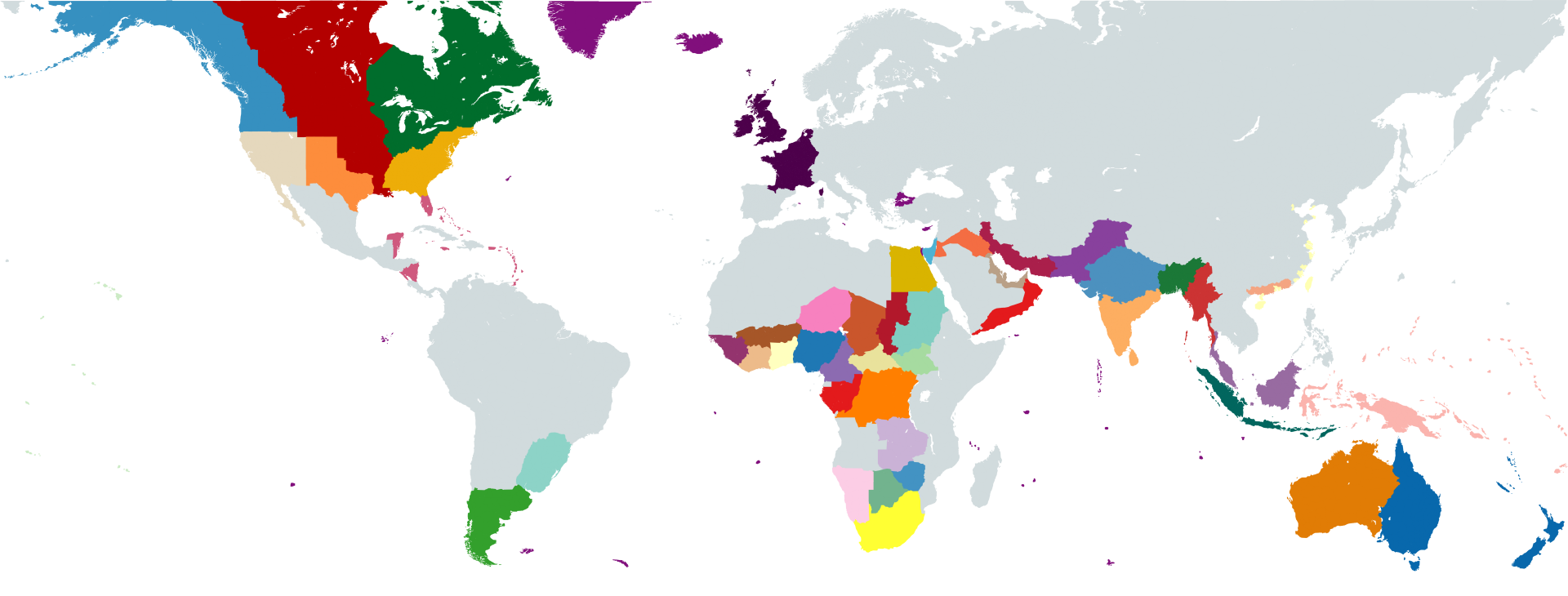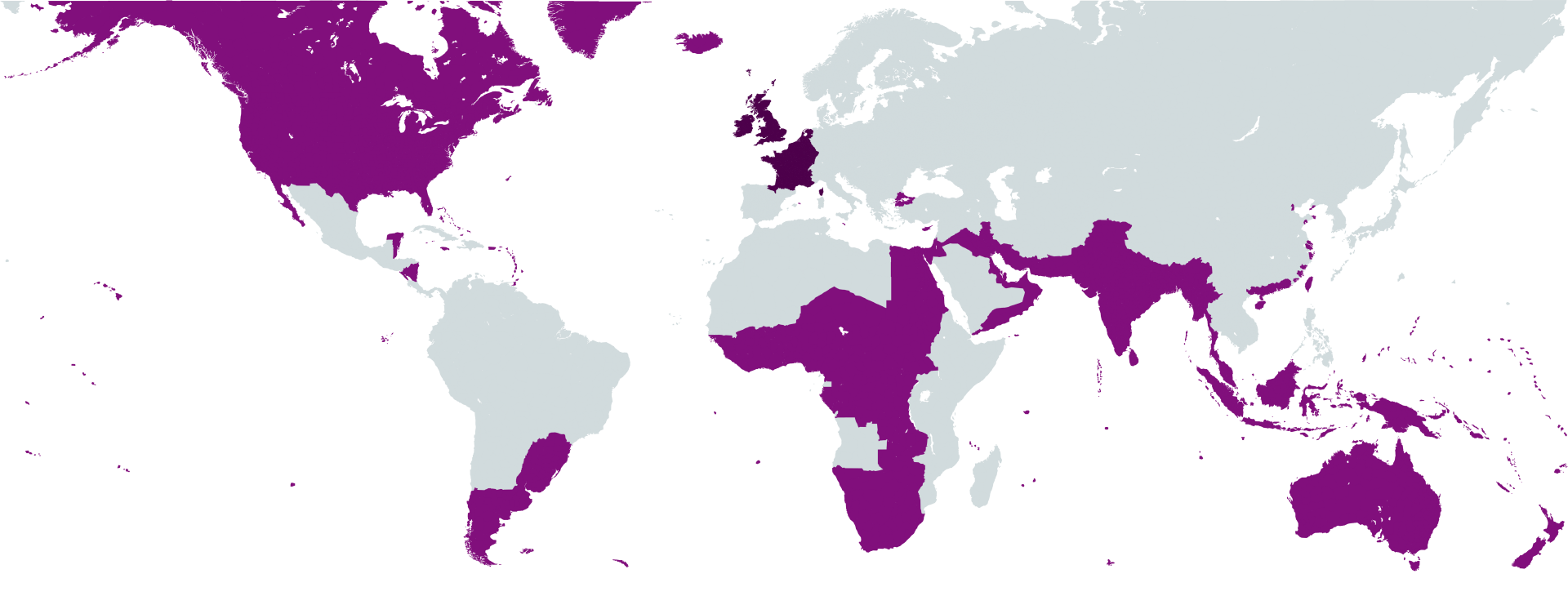| History: |
The execution of Joan of Arc would come to mark the beginning of the end for the French Wars of Succession (1337-1498), as the Armagnac Party would never again rise to what it once was. The Valois and their allies would fight on for another seventy years, but with the victory of Edward the Red Prince at Vichy, the future of a Dual Monarchy of France and England was secured, only being confirmed with the 1498 Treaty of Rome.
The threat of encirclement with the Marriage of Anne of Brittany with Jean III of Burgundy led to the breakdown of the Anglo-Burgundian alliance in 1490 when, unable to challenge the marriage, Edward the Conqueror invaded Brittany during the Anglo-Franco-Breton War (1490-1492). Burgundy, unable to provide support against France due to rebellion fermented by the House of Lorraine, forced Brittany's surrender. While it was too late to annul the marriage, with Jean having consummated it, the Treaty of Le Verger effectively saw Brittany annexed into the French crown.
The Reformation presented new challenges to the unity of the thrones. The deep involvement of the Valois in aiding Zwingli's escape from Papal and Imperial imprisonment was too good a pretext to end any alternate succession, causing the Languedoc War (1532), and ending with the conquest of Languedoc & Auvergne, leaving only a rump Provencal state in the Azure Coast and in Rhone.
In addition to the affairs of Provence, it also engaged in what became known as the Great Game with the Kingdom of Burgundy and the Crown of Aragon. The subject of these wars of influence came about with Navarre (which saw the conquest of the County of Foix & Bearn in 1516 and ended in a victory for the Plantagenets with the integration of the Kingdom in 1552), the Italian Peninsula (which ended largely as a victory for the Aragonese, as most of the Peninsula, save Savoy, Genoa, Milan, and the Emilian Dukedoms fell under their influence, compared to only Savoy for the Dual Monarchy).
While aggressively fighting heresy abroad the Kings of Both Thrones were initially tolerant of Protestants. King Francois I was torn between dynastic links to the firmly Catholic Jagiellons of Bohemia and a large portion of his populace firm in their new faith. Further strife in England and in Aquitaine combined with the growing threat of Burgundy (long the champion of the Protestant cause) tipped the balance leading first to the Anglo-French Wars of Religion (1598-1614) both within the Kingdom and among its neighbors, and later after the defeat of the Protestants, the Anglican Father Pilgrim and their followers fled to what they would call New England (now the Dominion of Beornia). However, a reversal by Henry VIII in 1618 brought on by the Pope refusing to ratify the Anglo-French conquest of Provence made Anglicanism the state religion, reintegrating Nova Anglia as a colonial realm and severely weakening the remaining Catholic states.
While England was briefly a viceroyalty under the Dukes of Gloucester, the throne would be forever undivided following the dissolution of the English Parliament and French Estates General by Henry VII in 1537, and the creation of the unified Parliament co-located in Paris and London. The nobility, with the exception of some distant provinces, converged as a new combination of French and English became the official language throughout both kingdoms. This led to the gradual Francification of England and Anglification of France. By the turn of the 19th century, Anglois has become the primary common language in the Southern parts of England and in Northern France. The concept of a centralized Parliamentary body was revolutionary for its time, and, almost ironically, would influence the future legislative bodies of the Burgundian Estates-General, the Savoyard Subalpine Senate, the Aragonese Cortes and the Scandinavian Riksdag, among other European states.
The Anglo-French history in Ireland was also something of a peculiar moment. During the French Wars of Succession, English, and later Anglo-French control of the Island was left in the hands of the House of Fitzgerald, the Earls of Kildare as much time was spent in building a new administrative apparatus for both England and France. Because of this, the Kildares, along with the House of Desmond, both began to rule Ireland as if it was their own Kingdom. The issues, which had been building up during the twilight years of the reign of Henri VIII culminated in the three Irish Wars (1573-1579, 1583-1594 and the Nine Years’ War, 1598-1607) which gradually saw Ireland pacified, the rebel Irish Lords killed and the King of England and France reaffirmed as Lord of Ireland.
With the unexpected ascension of James IV of Scotland to the Throne of the North in 1500 the Plantagenêts faced the threat of encirclement by the alliance of Burgundy and the former. The exodus of the early 17th century was compounded by wars against Burgundy and Scandinavia pushing emigration to the colonies of Plantagenia and Patagonia. However, the pushing towards these colonies was not without strife there as well, as conflicts were rife between Colonial Vinland and New Burgundy, as well as against the Cherokee and Creek, among other First Nation Tribes.
Eventually, the Dual Monarchy secured its position as the unquestioned power in Western Europe amid the gradual decline of Spain. A period of relative peace in Europe allowed the Dual Monarchy to expand its influences abroad. The Dual Monarchy established trading posts along the coast of Sierra Lionne, which allowed them to trade European goods for slaves to be sent to the New World. A series of wars with the Kingdom of Kandy (1696-1703, 1705-1715, 1716-1717) saw the entirety of Ceylon becoming an Anglo-French crown colony, allowing access to the Indian Ocean Trade through good relations with the Nasirid Sultans of Bengal, whose decline in the 1760s brought Bengal into the Anglo-French fold. At the same time there was a great degree of expansion in the Anglo-French colonies in the New World, as colonial conflicts with Scandinavia, Burgundy and Aragon, reinforced its mother country’s position.
The dawn of the Eight Years' War (1756-1766), now often regarded as the first truly global war, was the pivotal moment that marked the rise of Angevinia amidst the decline of Spain and the temporary defeat of its enemies. Angevinia's allies included Bohemia and Spain, as they fought against historical Anglo-French rivals Scandinavia, Burgundy, and Aragon. In North America, Angevin colonists ousted Scandinavian and Burgundian colonists while Patagonia's borders were largely settled after supporting Lotharingia's independence war from Burgundy. In Europe, the utter defeat of the Scandinavians on the British Isles led to Charles I abandoning his possessions in Scotland, bringing the kingdom into the English fold. Ground was gained in France, as the Shame of Calais was retaken, and parts of the Lowlands were seized when the dust settled. In India, the war was the final push that made Bengal part of the realm, as Bengali forces helped seize the growing Burgundian Burma colony, beginning the next century of conquests on the Indian subcontinent as the Angevins solidified their position in the south and the east.
Remaining largely aloof during the opening stages of the Great German Wars allowed the industrial revolution to take hold as Bohemia continued to grow in strength. But the battles of the later war quickly demonstrated that the old rival Burgundy was again on the rise as even beaten and battered it remained victorious. The casualties of colonial forces alongside growing sentiment for representation forced the Plantagenet King to grant Dominion status to the colony of Nova Anglia (now the Dominion of Beornia) in 1812, with many of the American colonies following in the next four decades (Dominion of Plantagenia in 1823, the Dominion of Edwardia in 1824, the Dominion of Patagonia in 1838, and the Dominion of the West Indies in 1845). At this time, Cascadia and Tejas were either unsettled, unorganized colonial territories of the realm, or under the ownership of Gran Colombia.
However, while the Plantagenet Kings allowed the German Wars to unfold, they remained active growing a new presence around the world in Asia and Africa. Anglo-French geographers and explorers were commissioned in the 1830s and 1840s to map the interior of Africa, during which they mapped the now-infamous Mapafrique and discovered the Congo basin, setting up preliminary coastal settlements that marked Anglo-French claims on the resource-rich lands.
In India, Edward VI invested heavily in swooping up the territories of rulers who recently passed away, expanding what was becoming the growing Angevin Raj to Gujarat and Nepal by the 1870s. In Oceania, the end of the prisoner transports to the New World marked the entry of the Plantagenets into the Oceanian Game, contesting with the Scandinavians and Venetians for control over land. |
| History: |
The Dual Monarchy of France and England's armed forces underwent significant developments over its long history, marked by several wars and conflicts. The country's army was first organized into the English army, which fought against the Armagnac Party in the French Wars of Succession (1337-1498). After seventy years of conflict, the future of the Dual Monarchy was secured with the Treaty of Rome in 1498.
The Dual Monarchy's navy played a significant role in the Anglo-Franco-Breton War (1490-1492). The threat of encirclement with the Marriage of Anne of Brittany with Jean III of Burgundy led to the breakdown of the Anglo-Burgundian alliance, and Edward the Conqueror invaded Brittany. The navy played a crucial role in supporting the invasion, leading to Burgundy's inability to provide support against France due to the naval blockade fermenting a rebellion by the House of Lorraine. The navy was also involved in the Great Game with the Kingdom of Burgundy and the Crown of Aragon, leading to victories such as the Battle of Biscay in 1515.
During the Reformation, the Valois monarchy faced new challenges to its unity, leading to the Languedoc War (1532) and the conquest of Languedoc & Auvergne. The country's army was also involved in the Anglo-French Wars of Religion (1598-1614), leading to the reintegration of Nova Anglia as a colonial realm and the weakening of the remaining Catholic states.
The Dual Monarchy's airforce did not emerge until the early 20th century, with the development of planes during World War I. The country's army and navy played crucial roles in the conflict, with the navy involved in blockading the German coast and the army involved in battles such as the Somme and Verdun.
The Dual Monarchy's centralized parliamentary body was revolutionary for its time, influencing future legislative bodies of other European states. The country's army and navy played significant roles in the Irish Wars (1573-1579, 1583-1594, and the Nine Years’ War, 1598-1607), leading to the pacification of Ireland and the reaffirmation of the King of England and France as Lord of Ireland.
The Dual Monarchy's armed forces faced the threat of encirclement by the alliance of Burgundy and Scotland, leading to significant emigration to the colonies of Plantagenia and Patagon. The Dual Monarchy's army, navy, and airforce continued to play significant roles in conflicts throughout its long history, marking its place in the annals of military history. |


